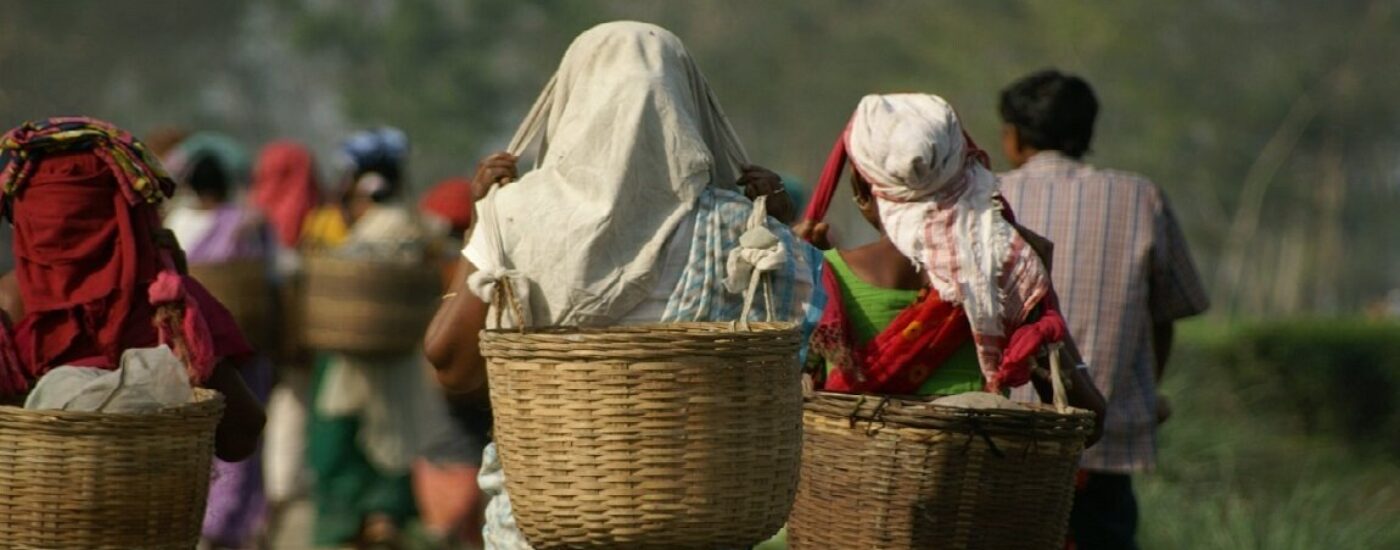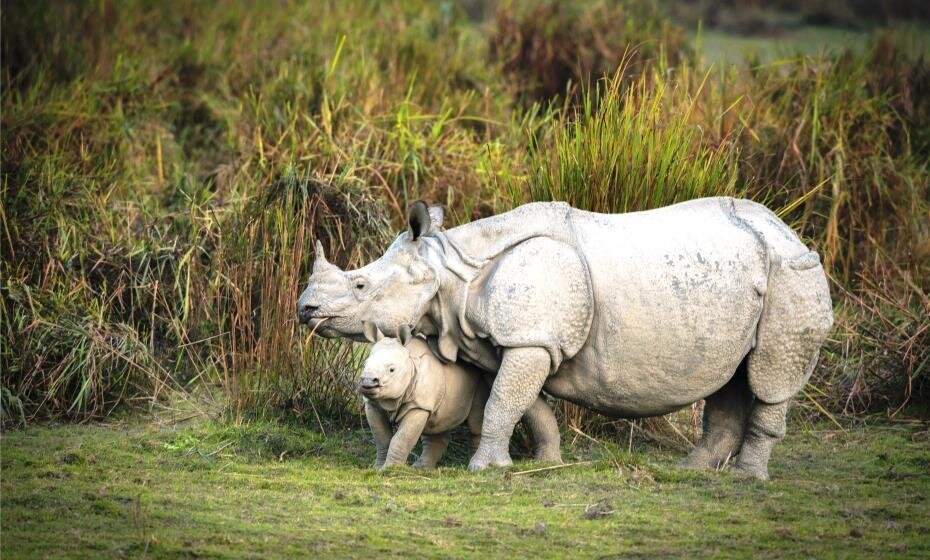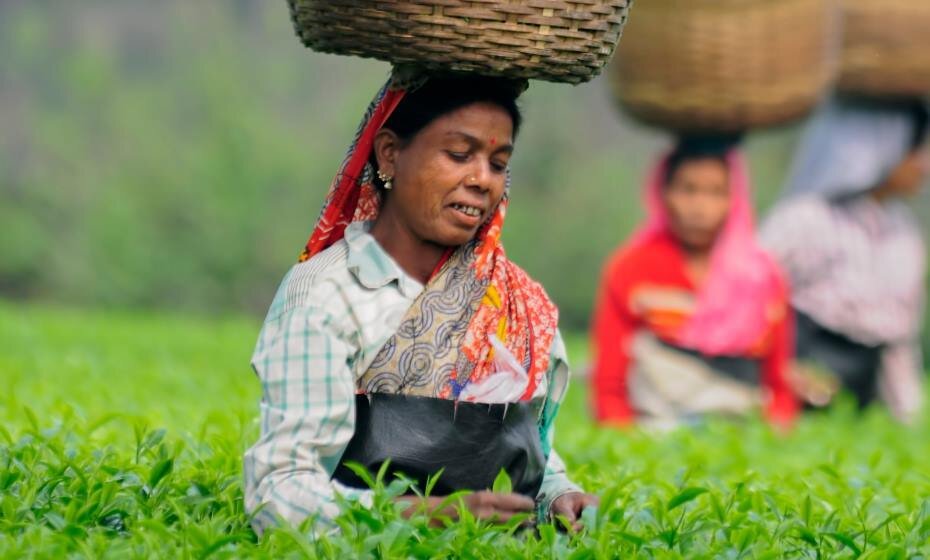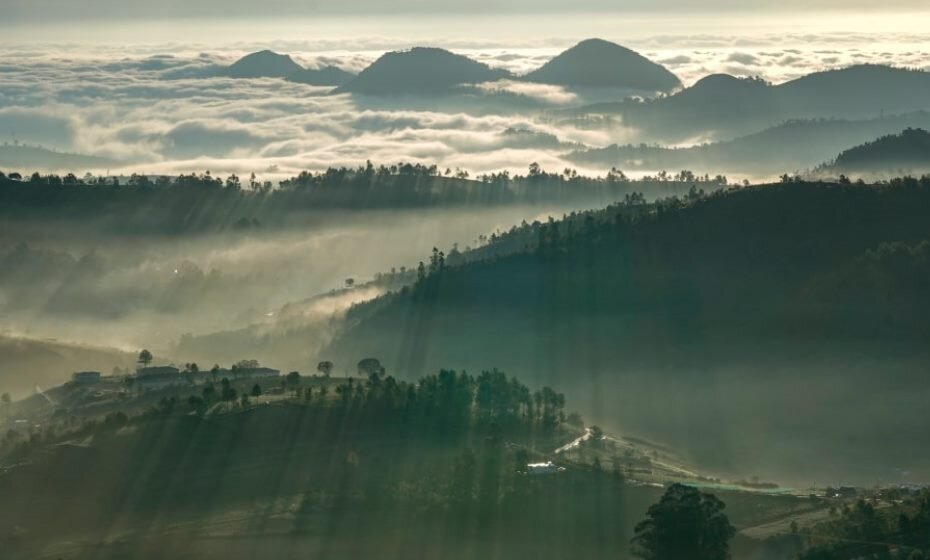Tea production in India is big business. India is one of the world’s largest producers of tea with more than 2 million people involved in tea production and 13,000 tea gardens. From humble roots as a cooking ingredient to a multi-million-pound business, Indian tea is steeped in fascinating history. Tea is the most consumed beverage after water in the UK with a variety of brands and types to choose from.
Tea production in India
Grab yourself a brew and enjoy learning about tea and the process involved from leaf to mug.
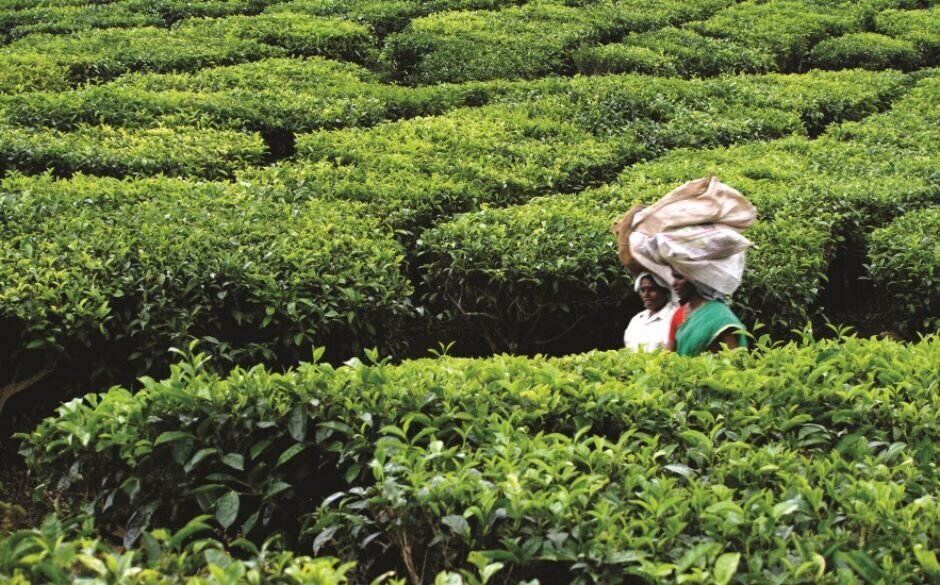
A brief history of tea production in India
Tea production in India has a long and detailed history. Way back in 750BC, the native tea plants of the Assam jungles were used as a cooking ingredient, rather than a beverage. On his visit to India in 1538, Dutch explorer Jogn Hughen von Linschoten discovered that Indian cooks prepared tea leaves in a popular vegetable dish with garlic and oil, as well as boiling them to make a drink.
Fast forward to the 18th century, when Warren Hastings the first Governor-General of Bengal sent a selection of China seeds to George Bogle, the British emissary in Bhutan for planting in 1774. Two years later, the English botanist Sir Joseph Banks recommended in his notes that tea cultivation should be undertaken in India.
Colonel Robert Kyd, the founder of the botanical garden at Calcutta experimented with seeds from a consignment from China in 1780, and the explorer and merchant Robert Bruce was introduced to Indian tea by Singhpo chief Bisa Gam in 1823. Large parts of the jungle in Assam, Darjeeling and Nilgiri were cleared by the British to be plantations to find an alternative to expensive Chinese tea and to prevent excessive trade with China. The intense Assam heat was too much for the Chinese sinesis seedlings, but the native assamica plants flourished, being better suited to the climate.
The Bengal Tea Association in Calcutta and the Assam Company in London were formed after the first twelve chests of manufactured Assam leaf tea were shipped to London in 1838 and sold at auction. After this success, other tea cultivation companies formed, such as the Jorehaut Tea Company and George Williamson.
The introduction to Assam tea in the Empire was not an immediate hit, as many viewed it as inferior but tastes changed. To meet the demands, tea production in India began on a commercial scale and by 1887 more Indian than Chinese tea was being consumed in the United States.
After the success of tea growing in Assam, several plantations were established in the Himalayas. Commercial plantations began in Darjeeling in the 1850s, after the district was transferred in 1835 to the East India Company and initial trials took place in the 1840s.
By 1874, there were 113 gardens making up 18,888 acres of tea and tea production in India was at £3.9 million. India exported 183.4 tonnes of tea in 1853, and thirty years later that figure had grown to 35,274 tonnes.
Modern Tea Production in India
There are two classes of tea production in India for most teas, although there are dedicated methods for more specialist teas.
Crushing, Tearing and Curling (‘CTC’)
This industrial method was developed in 1930 by Sir William McKercher, superintendent on the Amgoorie Tea Estate in Assam.
The tea leaves are rested, cut and then crushed into pieces, which are then torn into even smaller pieces and rolled into beads. Although this method damages flavour and aroma, the tea is ideal for teabags.
Orthodox tea method
Tea connoisseurs will be more impressed with the Orthodox method, developed in the 1860s that produces a higher quality black tea.
The leaves are rested on large plates and dried by the sun to activate enzymes and reduce moisture content. They are then rolled to release oil and break down the leaf membrane, and the firmer the pressure, the more oil is released. The oxidation stage is where the rolled tea is left in a warm and humid place for a minimum of 30 minutes and a maximum of four hours, with the length of time influencing the character and flavour of the tea.
Large heated platters then dry the leaves and end the oxidation process, before the leaves are sorted to pick out uniform-sized leaves that can be steeped more precisely.
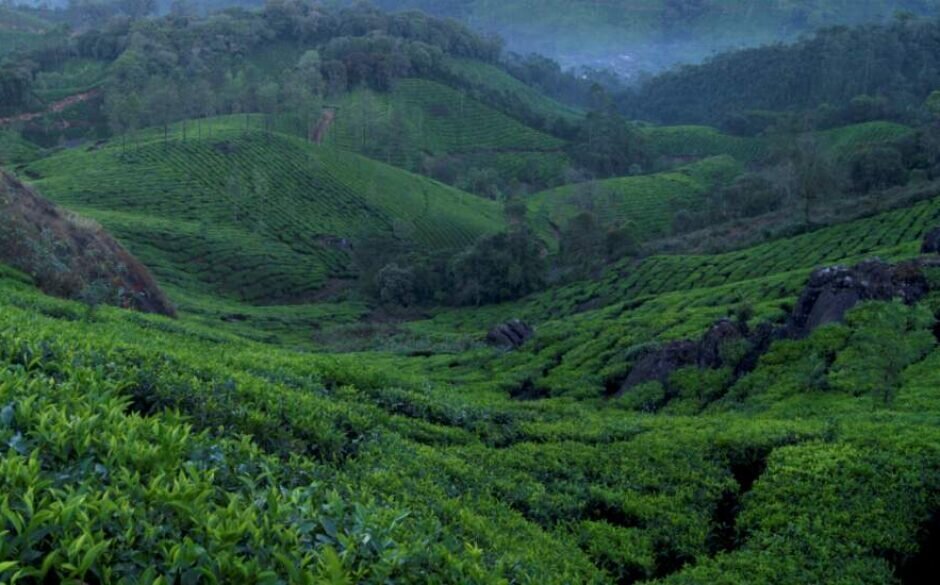
Tea Grading
Both CTC and orthodox teas are graded by quality, leaf size and the number of buds. The grading only describes the appearance and size of the leaves, the flavour is determined by tasting the tea. Generally, the smaller the leaf, the higher the grade. The Tea Board of India controls all tea production, certification, exportation and trade.
Orange Pekoe (OP)
This is used to grade black tea leaves. Pekoe is likely to be from the Chinese word pek-ho referring to the silver hairs on the leaves of certain bushes. Orange isn’t to do with flavour or colour, it is probably after the association with the Dutch House of Orange-Nassau and was used by the Dutch East India Company as a marketing name.
Flowery Orange Pekoe (FOP)
Large tea leaves that have two leaves and a bud and are typically plucked from new shoots are described as flowery.
Golden Flowery Orange Pekoe (GFOP)
Golden refers to the golden tip at the end of golden tea buds.
Tippy Golden Flowery Orange Pekoe (TGFOP)
Tippy refers to the amount of golden tip in the tea, with this rating indicating a high proportion of golden tips.
Finest Tippy Golden Flowery Orange Pekoe (FTGFOP)
Only teas of high quality will have this grade, hence the word Finest.
Special Finest Tippy Golden Flowery Orange Pekoe (SFTGFOP)
It’s very rare to find tea with this classification but it does exist. There might also be a number at the end such as SFTGFOP1 if it’s even more special.
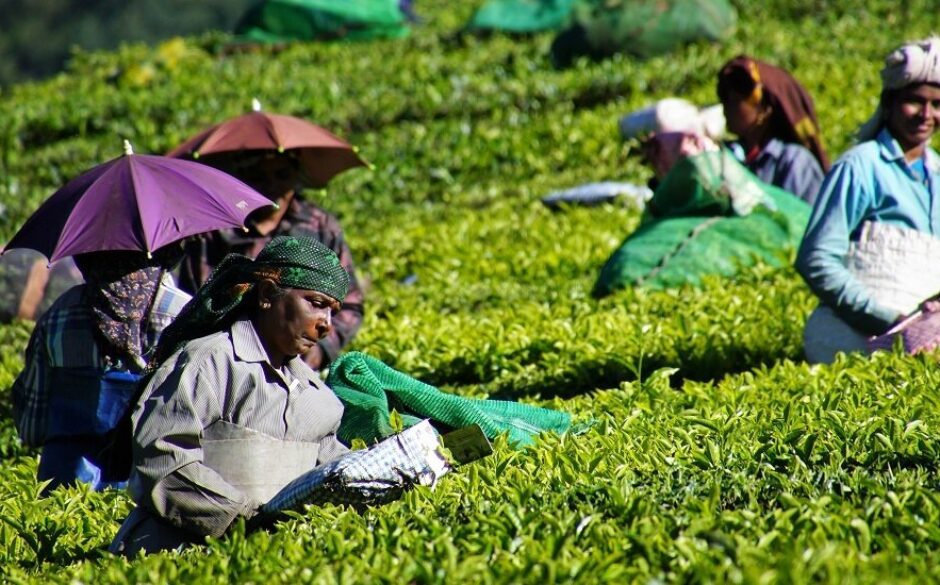
Regional Tea Production in India and Speciality Teas
North East India
Assam, North East India
With an ideal tropical and wet climate and the Brahmaputra River providing an extra water source, Assam produces more tea than any other Indian region. Assam black teas are heavily used in classic Indian chai and English blends.
Tea attributes:
If you like a bright, strong cup of tea, then Assam is definitely your cup of tea! Assam tea has a full-bodied malty flavour, deep aroma and rich colour.
Himalayas
Darjeeling, Himalayas
Darjeeling is the most highly regarded tea production region in India, famous for growing “The Champagne of Black Teas.” Only tea grown here can be labelled as Darjeeling Tea.
Tea attributes:
Darjeeling First Flush – from mid-March to mid-May. It has an amazing rich aroma and a lighter taste as it is not fully oxidized. The taste is more like oolong tea than black tea.
Darjeeling Second Flush – from the end of June until mid-July, with malty, fruity tones and aroma.
Darjeeling Autumn Flush – harvested in October and November before winter and after the monsoon rain, these bigger leaves are no longer leftovers but used for a softer-bodied version of the second flush.
Sikkim, Himalayas
Sikkim has a similar climate to Darjeeling and was developed as a tea-growing area following a government programme.
Tea attributes:
The first flush has a light floral finish and a sweet taste. The second flush has a toasty and strong flavour, and the third flush is full-bodied and mellow. The final flush has a well-rounded taste and a slight hint of warm spices.
Dooars, Himalayas
Tea from the wet region of Dooars is usually black, clear and heavy, with brisk notes and tobacco undertones.
Tea attributes:
Crystal clear, black and full-bodied, this tea is slightly lighter than Assam tea.
Kangra Valley, Himalayas
The constant rainfall and lack of pests and insects help Kangra produce its famous green and black teas.
Tea attributes:
Known for its unique colour and flavour, Kangra black tea has a sweet lingering aftertaste and the green tea has a delicate woody aroma.
South India
Nilgiri, South-East India
Part of the Western Ghat mountain range, the Nilgiri Hills is India’s third-largest tea producing area, growing a large-leafed sweet, spicy tea. The main plucking season is between December and March.
Tea attributes:
Fragrant and aromatic with delicate floral notes. Nilgiri Orthodox tea has recently been registered as a Geographical Indication in India.
Anamallais, South India
With over 12,000 hectares under tea, Anamallais is home to the Tea Research Foundation, the second-largest tea research institute managed by UPASI (The United Planters’ Association of Southern India).
Tea attributes:
Biscuity aroma, brisk and bright. A morning refresher!
Wayanad, South India
This gorgeous green destination is full of plantations, forests and wildlife. After the 1897 coffee bubble burst, planters turned to tea instead.
Tea attributes:
Medium toned, earthy red with biscuit notes. Mild and mellow, and full-bodied with a light briskness.
Chikmagalur, Karnataka
Karnataka is the largest producer of coffee in India, but also produces over 5 million kg of tea. The plantations are found at a height of over 5000 feet and enjoy a salubrious climate.
Tea attributes:
Simple and fragrant with a golden colour. Fair bodied, balanced and medium toned. A great all-day tea.
Travancore, Kerala
Travancore is surrounded by lush green plantations of tea, coffee, cardamom, coconut, eucalyptus, pepper and rubber. Tea cultivation began after a leaf disease crippled the local coffee plants in 1875.
Tea attributes:
A medium fragrance reddish tea with yellow hues. Balanced with body, and great to drink at elevenses.
Munnar, Kerala
The beautiful hill station of Munnar is the commercial centre of some of the highest tea-growing estates in the world. This idyllic mountain tourist destination has expanses of tea plantations, waterfalls and exotic species of flora and fauna.
Tea attributes:
Clean and medium-toned golden-yellow tea with a hint of fruit and a sweet biscuit fragrance.
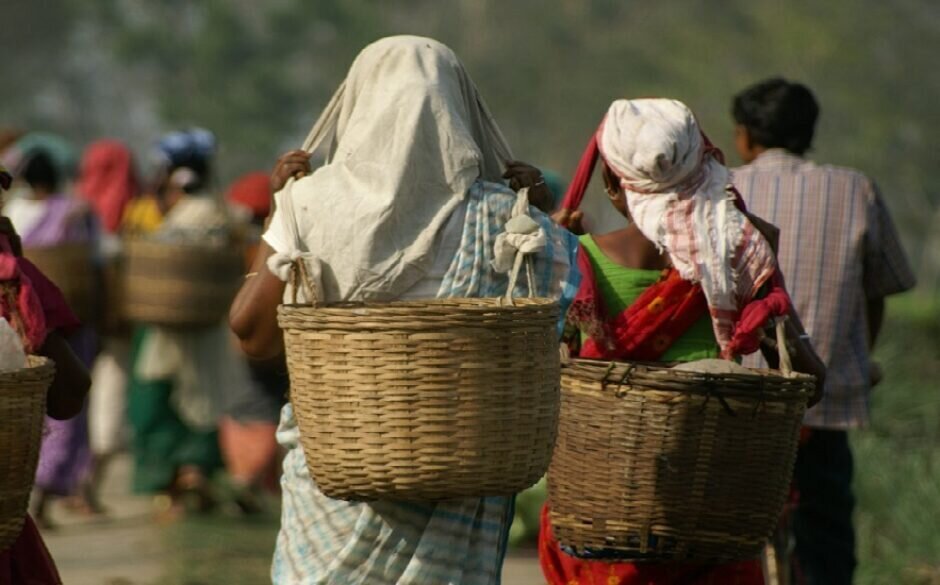
5 tips for brewing the perfect cup of tea
Now you’ve learnt about tea production in India, it’s time for a tea tutorial!
1. Fresh water
Use freshly drawn water in your kettle. Why? Every time you boil water it loses some of its oxygen, so re-boiling is flattening it out further. If your water is heavily chlorinated, try bottled or filtered water.
2. Warm your teapot
When the kettle has almost boiled, pour a little water into your teapot and give it a gentle swish around to warm the pot. You can then pour this water into your cups or mugs to warm them up too.
3. Measure your tea
Check the packaging of loose leaf tea for the required amount, as this can vary considerably. You can use an infuser or a disposable fillable bag, or simply put the tea loose in the pot and strain afterwards. If you like your tea strong, brew it for the same time but with more tea rather than leaving it for longer.
4. Get the temperature right
Check the required temperature of your water. Black and herbal teas need water that has just come to the boil to preserve oxygen.
5. Time the brewing
Steep for the suggested time and pay attention to the taste rather than the colour. A general rule is, the smaller the leaf, the faster the tea infuses.
We hope you’ve enjoyed our guide to tea production India and are inspired to try a new brew or two, whether that’s at home or at a plantation visit on a bespoke tour.
Inspired to find out first-hand about tea production in India?
Try these specialist tours including tea plantation visits.
We hope you enjoyed this guide to tea production in India. For more food and drink-inspired content, why not read about Curries from Around India or Indian Food to Cook on the Barbecue.

